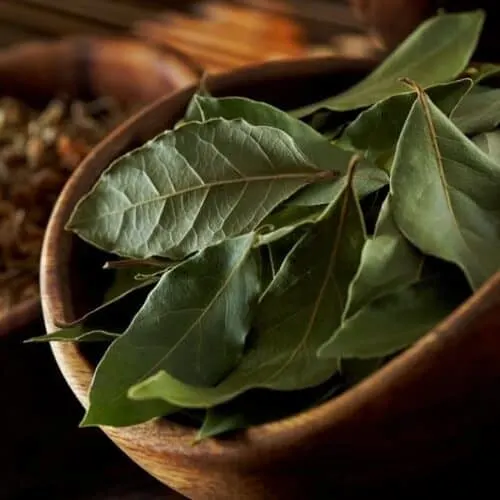A bay leaf is an aromatic and flavorful leaf from a laurel tree, which we use as a flavor enhancer spice.
Bay leaves have a lot of pungent smell and astringent flavor, which you add in various cuisines, including sauces, soups and stews, and even to tea.
Also, if you didn’t already know, bay leaves have vast nutritional benefits.
According to Verywellfit, it offers us the right amount of vitamins A, C, Calcium, Iron, Magnesium, Manganese, Potassium, and is known to have eased various other health issues.
Let’s be honest; we all have that very old jar of bay leaves living in the cabinet, which we are not sure of its uses but uses them almost every day nonetheless.
But have you ever wondered how long does bay leaves last? Is it even safe to still eat that sad old bay leaves that you have lying in your spice cabinet?
Well, to answer that question, let us go further.
Do Bay Leaves Go Bad? How Long Do Bay Leaves Last?

Dried herbs and spices seem to be everlasting.
Although consuming those questionable jars of spices like bay leaves, cinnamon, and chili powder won’t kill you, it would have already lost its full flavor, then what’s the point of adding bland and dull spices to your meal?
It is ideal for bay leaves to last from 1 to 3 years, purely depending on how you store them.
To increase shelf life, it is best to store dried bay leaves in a dark and cool area, away from sunlight and heat, because they reduce the potency of the leaves.
But if you’re using fresh bay leaves, it will probably last you for a week, and that is if appropriately stored in an airtight container.
One interesting fact about bay leaves storage is that- the spice shelf is not where the bay leaves belong but rather in the freezer, as stated in Thekitchn.
Storing them in a freezer helps the leaves retain most of its aroma and flavor for a more extended period.
Dried bay leaves last you a long time but…
Bay leaves do not necessarily go bad or spoil, but if you noticed that your meal doesn’t taste as flavorful and as aromatic, then it’s probably considered bad.
I mean, who wouldn’t want a whiff of aroma and pungency to spice up your food’s flavor.
How To Tell If Bay Leaves Are Bad? Bay Leaves Shelf Life!

Bay leaves give a pleasant scent and add a particular nuance to your meal, but if you don’t receive as much flavor as you expected, then the leaves could be considered bad, although you can still consume them.
However, for more physical evidence, if your bay leaf container or bag has moisture in it, then you should look for any sign of mold in your leaves.
Also, another way to know if a bay leaf has gone bad is by checking if the leaf upon touching and light pressing fall into pieces, then it is a sign that it has been stored for way too long and is time to replace with a fresh one.
You can also try rubbing a leaf with your fingers and smell it; if the aroma is weak, then they have gone bad.
Conclusion

Bay leaves are all about enhancing its surrounding in a meal. They add a pinch of flavor with an aroma without which your meal still won’t break, but it definitely adds a subtle kick to it.
Moreover, although consuming years old or illy stored bay leaves are not considered unsafe, it sure does take away a lot of its assets.
Therefore, to enjoy and get the best of the bay leaf, make sure you store them properly and replace those ancient jars of leaves in your cabinet with a fresh one.

Do Bay Leaves Go Bad? How Long Do Bay Leaves Last?
Ingredients
- Bay leaves
- Air-tight containers or Ziplock bags
- Labels and markers
Instructions
- Read the guide thoroughly to learn how long it lasts.
- Label your container with the content and date and keep track of how much you’re using!
- Make sure to store in an airtight container in a cool, dark place (pantry or fridge).
- If frozen, thaw in the fridge before use. Always check for signs of spoilage before using.
